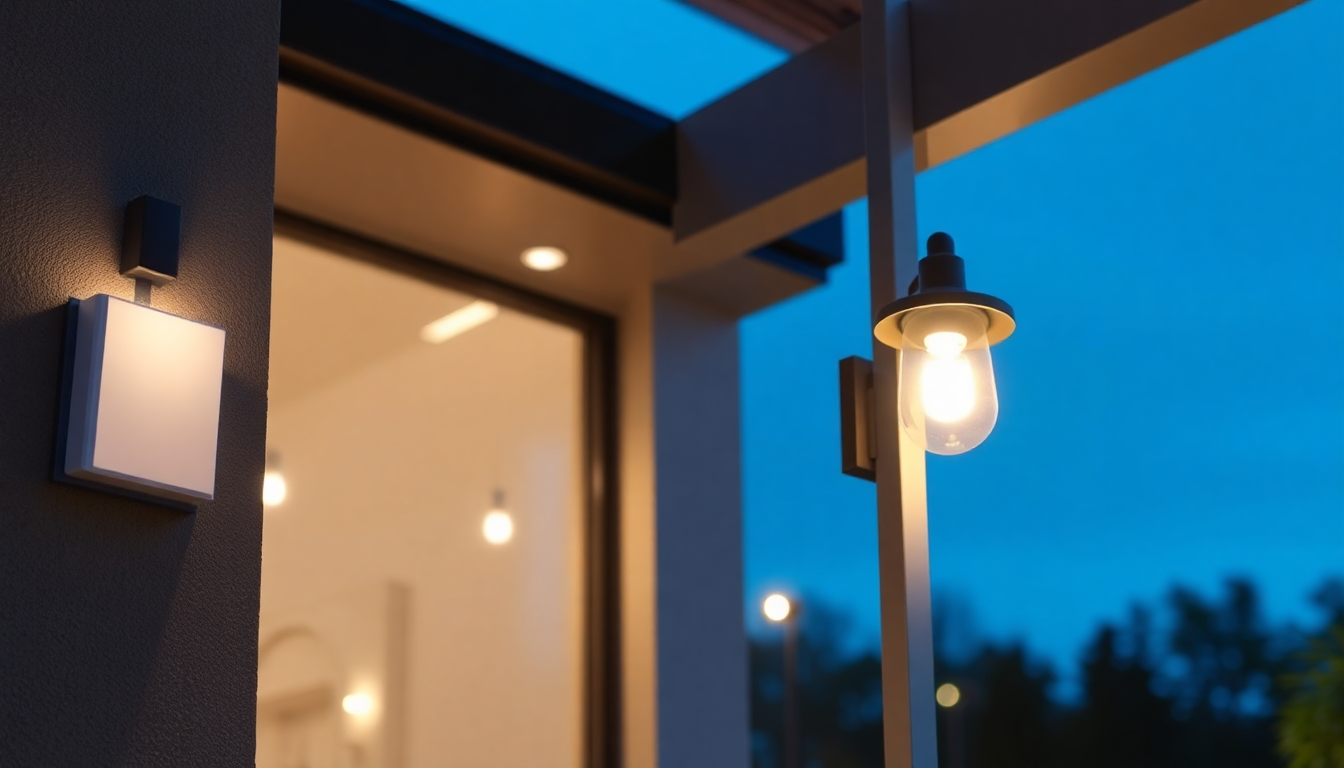Introduction
In 2025, smart home technology is reaching new heights, transforming everyday living experiences. Among these innovations, smart night lighting stands out as a crucial component for enhancing residential safety, reducing energy consumption, and creating more comfortable living environments. Leveraging the power of Internet of Things (IoT) and Artificial Intelligence (AI), modern smart lighting solutions are becoming smarter, more responsive, and more integrated than ever before. This article explores the latest developments in smart night lighting, their features, benefits, and future trends that promise to redefine how homeowners approach safety and energy efficiency at night.
The Evolution of Night Lighting: From Traditional to Smart Solutions
Traditional night lighting systems, such as basic porch lights or timers, provided minimal automation and limited control. They often resulted in unnecessary energy consumption and insufficient safety measures. The advent of IoT and AI introduced a paradigm shift, enabling lighting systems to become intelligent, adaptive, and user-centric. Today, smart night lighting offers dynamic control, real-time responsiveness, and integration with broader home automation systems, making them indispensable in modern smart homes.
Comprehensive Features of 2025 Smart Night Lighting
Modern smart night lighting systems incorporate a variety of cutting-edge features designed to maximize safety, convenience, and energy savings. These features include:
- Advanced Motion Detection: Using sensors and AI-powered analysis, lights detect minute movements, ensuring illumination during critical moments such as approaching guests or potential intruders.
- Adaptive Brightness Control: Lighting intensity adjusts dynamically based on ambient light levels, time of night, and activity levels, ensuring optimal visibility without unnecessary energy use.
- Scheduled Lighting & Circadian Rhythms: Customized scheduling aligns lighting with residents' routines and natural circadian rhythms, promoting better sleep patterns and well-being.
- Geo-Fencing and Location Awareness: Lights activate when homeowners approach their property and deactivate when they leave, providing convenience and security automatically.
- Voice and Mobile App Integration: Users can control lighting remotely via smartphones or voice commands through smart assistants like Alexa, Google Assistant, or Apple HomeKit.
- Emergency and Security Alerts: Smart lights can be synchronized with security systems to flash, alert, or notify homeowners and authorities during suspicious activities or emergencies.
- Energy Consumption Monitoring: IoT devices track usage patterns, providing insights for optimizing energy use and reducing utility bills.
How IoT and AI Drive Safer Residential Spaces
IoT and AI are the backbone technologies powering smart night lighting systems. Their synergy provides several safety enhancements:
- Real-Time Responsiveness: AI algorithms analyze sensor data instantly, enabling lights to respond proactively to movement, weather conditions, or security breaches.
- Predictive Analytics: AI can forecast potential safety issues based on environmental data and homeowner behavior, prompting preemptive lighting adjustments.
- Deterrence of Crime: Randomized, well-timed lighting patterns simulate occupancy, deterring potential intruders and protecting assets.
- Integration with Security Systems: Seamless communication between lighting, cameras, and alarm systems ensures comprehensive safety coverage.
- Emergency Assistance: In case of emergencies like falls or health crises, connected systems can provide immediate lighting and alert emergency services or care providers.
Energy Efficiency and Environmental Impact
Besides safety, energy efficiency remains a core objective of smart night lighting in 2025. By intelligently managing lighting loads, these systems significantly reduce energy wastage:
- Optimized Usage Patterns: AI-driven scheduling ensures lights are active only when necessary, aligning with residents' habits and environmental cues.
- LED Technology: High-efficiency LEDs last longer and consume less power, further enhancing sustainability.
- Smart Dimming and Zone Control: Zones within the home or outdoor areas can be dimmed independently, decreasing overall energy consumption.
- Integration with Renewable Energy Sources: Solar-powered night lights and integration with home energy management systems support greener living.
- Reduced Carbon Footprint: Effective energy management contributes significantly to reducing household carbon emissions, aligning with global sustainability goals.
Future Trends and Innovations in Smart Night Lighting
The evolution of smart lighting in 2025 hints at even more improvements and innovations on the horizon:
- Enhanced AI Personalization: Systems will learn and adapt to individual routines, preferences, and safety needs for a truly personalized experience.
- Voice-Activated Fully Automated Systems: Seamless control through voice commands integrated with advanced AI-driven home assistants.
- Cross-Device Interoperability: Better connectivity with other smart devices—locks, cameras, thermostats—for an integrated home safety ecosystem.
- AI-Driven Predictive Maintenance: Early detection of device malfunction to ensure reliable lighting operation without interruption.
- Enhanced Aesthetic and Design: Sleek, discreet lights that blend seamlessly with home architecture and landscape design.
- Use of Sustainable Materials: Incorporation of eco-friendly, recyclable components and energy harvesting technologies such as solar panels.
Challenges and Considerations
While the benefits are substantial, adopting smart night lighting systems also involves addressing certain challenges:
- Privacy Concerns: Continuous data collection necessitates robust security measures to protect user privacy.
- Compatibility Issues: Ensuring interoperability among different brands and standards remains a technical hurdle.
- Cost Factors: Initial investment can be higher than traditional lighting, though savings on energy and maintenance offset the costs over time.
- Technical Support and Maintenance: Requires ongoing updates and support to ensure optimal performance and security.
Conclusion
In 2025, smart night lighting innovations powered by IoT and AI are transforming residential security and energy efficiency. These intelligent systems provide personalized, adaptive, and energy-conscious lighting solutions that enhance safety while reducing environmental impact. As future technological advancements continue to emerge, homeowners will enjoy smarter, safer, and greener living environments. Embracing these innovations not only benefits individual households but also contributes to a more sustainable and secure future for communities worldwide.




Laisser un commentaire
Tous les commentaires sont modérés avant d'être publiés.
Ce site est protégé par hCaptcha, et la Politique de confidentialité et les Conditions de service de hCaptcha s’appliquent.